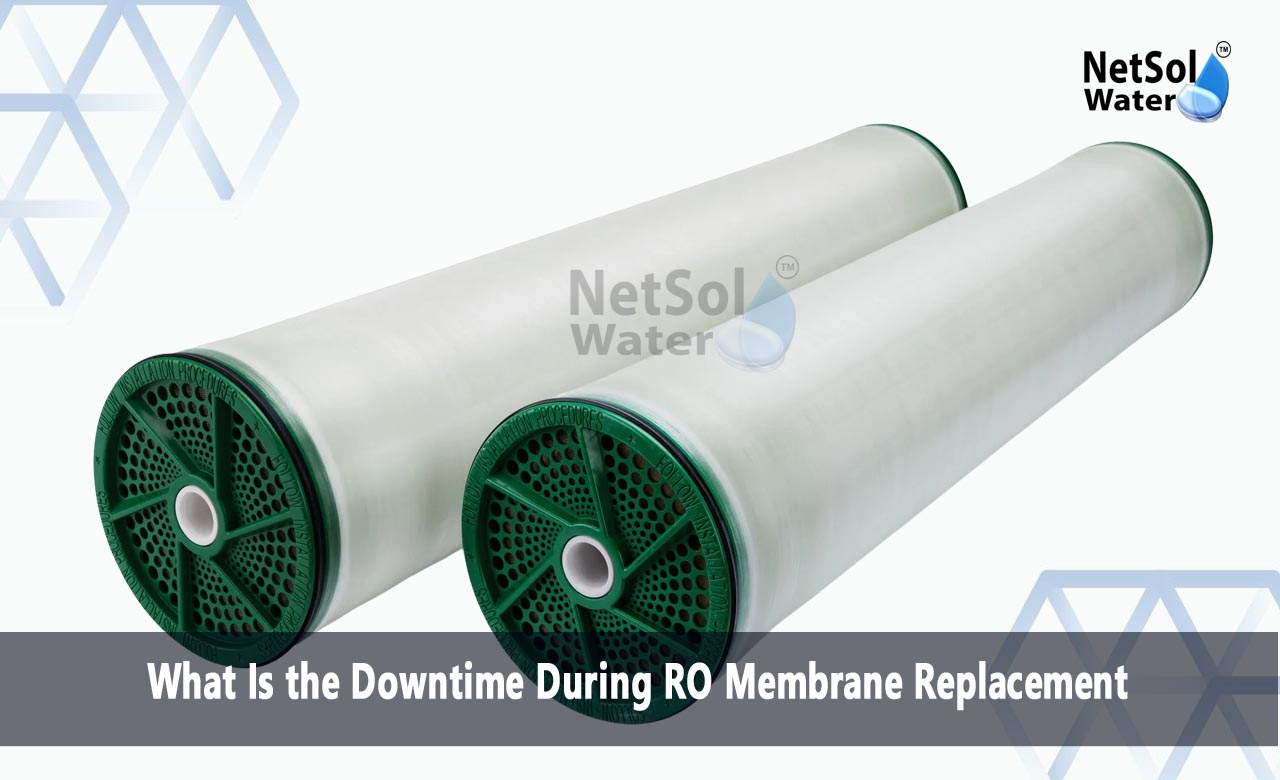What Is the Downtime During RO Membrane Replacement?
Reverse osmosis plants have a key role in the supply of safe and clean water that is used in households, businesses, and in industries. One of the most important parts of an RO plant is the RO membrane, which removes impurities in water. Just as any other component, RO membranes also have a limited number of lives and need to be changed occasionally in order to be able to use the system efficiently.
Information on the downtime during RO membrane replacement is essential for planning operations, minimizing disruptions, and ensuring a steady water supply.
Why Do Downtime During RO Membrane Replacement?
Downtime is the duration when the RO plant is off stream due to removal of the membrane and its installation. Several elements dictate the length of downtime:
System Size and Complexity: More industrial size RO plants with several membrane vessels would take longer to replace than compact commercial systems.
Number of Membranes: The greater the number of membranes, the longer the replacement time.
Accessibility: Physical location and accessibility of membrane housings can influence the speed of replacement.
Technician Skill: Experienced technicians generally do the job of membrane replacement more quickly and with less trouble.
Preparation and Maintenance: Effective cleaning, flushing, and system tests before and after membrane replacement can extend or reduce downtime.
Average Downtime Length
The average downtime during RO membrane replacement is between a few hours and a day or two depending on the aforementioned factors.
Small to Medium Commercial RO Plants: For machines with fewer than a dozen membranes, downtime is usually 4 to 8 hours. It entails turning off the system, replacing old membranes with new ones, flushing out the system, and placing the system on line.
Large Industrial RO Plants: In large plants with many membrane vessels, downtime can take up to 24-48 hours or even more. Such plants tend to replace membranes in stages or batches so as to save time for full shutdown.
Steps Involved in RO Membrane Replacement
Knowing the process, it is then clear why downtime is necessary:
System Shutdown: The RO plant must be shut down totally in order to provide safe access to membrane vessels. Water feed is shut off, pumps are switched off, and pressure is relieved.
Demounting Old Membranes: The housings of the membranes are opened with caution, and the old membranes are taken out. Special care and tools must be used not to damage vessels.
Cleaning and Inspection: The housings are sanitized prior to the installation of new membranes. The system is inspected by technicians for damage or wear and tear.
Installation of New Membranes: New membranes are properly installed, with proper alignment and sealing.
System Flushing and Testing: The system is rinsed with fresh water when new membranes are fitted to remove impurities and air bubbles. There are performance tests to confirm that the plant is operating as required.
Restarting the Plant: The plant is restarted after successful tests to continue normal water treatment.
Methods of Reducing Downtime During RO Membrane Replacement
Downtime can potentially impact production and water availability, especially for industries that rely predominantly on RO plants. The below are methods for minimizing downtime:
Scheduled Maintenance: Major maintenance such as the replacement of membranes should be carried out during off hours or scheduled breaks in order to keep interruption to a most irreproachable minimum.
Batch Replacement: Major units can be replaced in batches and not all at the same time in order to enable partial use of the system in most cases.
Pre-Preparation: All new membranes and equipment should be prepared before shutdown to save time.
Trained Personnel: Train personnel who are well versed with the system so as to hasten the replacement.
Application of Quality Membranes: Quality membranes that have long life span decrease replacements and conversely the downtimes.
What Will Occur When Downtime Management Is Not Effective?
As result of poor handling of downtimes during replacement of membranes, this may result into:
Water Supply Interruptions: This can cause interference with business, or discomfort to commercial/residential facilities.
Loss of Production: There are industries that depend on RO water; failure to supply water will result to a loss of production.
Working Expenses: The spontaneity of repairs, rush replacement, or bodily damage of the system on account of incorrect handling enhance expenses.
Conclusion
The downtime during RO membrane replacement should be known so that there are no hustles during operation or planning. Although the small system can have some hours of down time, large industrial plants may take a day or two to handle. This is reduced through viable planning, qualified technicians and frequent preventive checks thus ensuring that the RO plants are in the best condition of operating.
Frequent membrane replacement will guarantee conformance with water quality and system efficiency. You can reduce downtimes and mitigate your investment in RO technology by pre-planning downtime or replacing components in a well-scheduled manner.
Do you need an advice or assistance on selecting the best water and waste water treatment unit? We have solutions for all your problems!
Let us know your problem, our experts will make sure that it goes away.
For an assistance or related query,
Call on +91-9650608473 Or write us at enquiry@netsolwater.com



